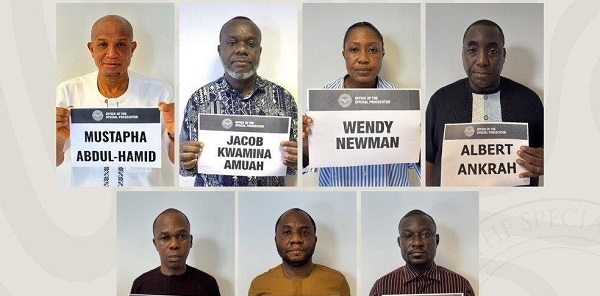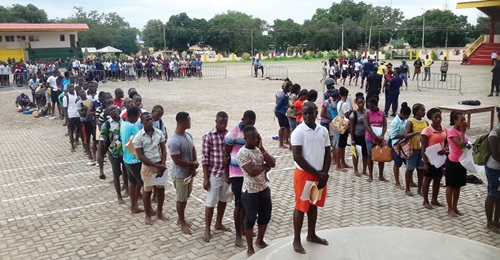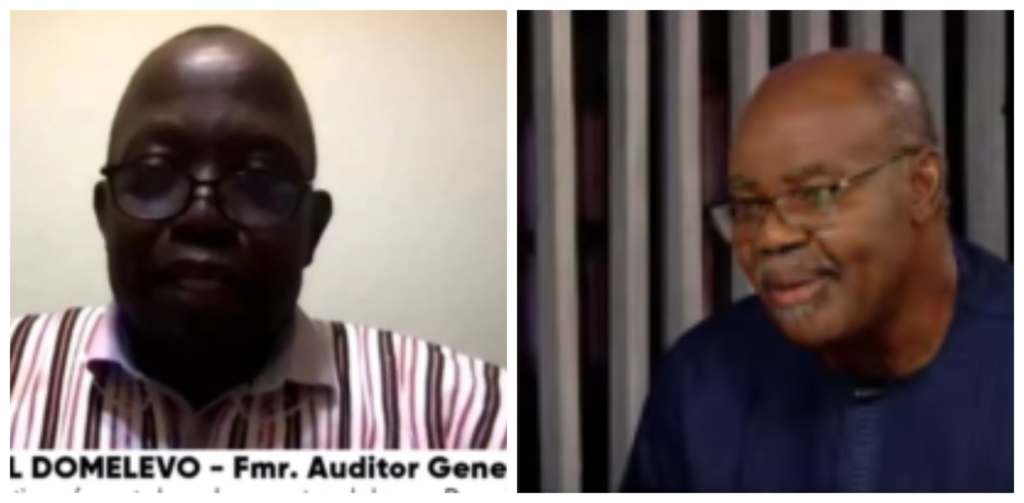1. Wind Energy in Africa
1.1 A Strategic Opportunity for Energy Security in a Changing Climate
In the face of escalating climate risks, rising energy demand, and economic vulnerability, Sub-Saharan Africa (SSA) stands at a pivotal energy crossroads. The region’s overreliance on fossil fuels and hydro-dependent power systems, many of which are increasingly threatened by climate variability, has exposed millions to frequent energy insecurity. Against this backdrop, wind energy has emerged globally as one of the most scalable, reliable, and clean alternatives to traditional energy sources. Defined as the harnessing of kinetic energy from atmospheric wind flows to produce electricity, wind energy not only provides a pathway to decarbonisation but also represents a transformative lever for energy sovereignty, industrialisation, and rural electrification in Africa (International Renewable Energy Agency [IRENA], 2021).
Wind power emits no greenhouse gases during operation, requires no water for cooling, and has among the lowest lifecycle environmental footprints of any energy technology. In regions like Ghana, where the dual threats of energy intermittency and economic constraints pose serious challenges, wind offers a compelling opportunity to diversify the energy mix, lower electricity costs over the long term, and create localized employment across the value chain. The urgency to embrace clean energy solutions has never been more critical. Global carbon dioxide emissions hit record highs in 2023, and Africa—though contributing least to the climate crisis—remains among the most vulnerable (Intergovernmental Panel on Climate Change [IPCC], 2023). For Ghana and other SSA countries, scaling up wind energy is no longer just an environmental imperative—it is a strategic necessity.
1.2 Current Landscape of Wind Energy Across the Continent
Despite its immense potential, wind energy remains underexploited across the African continent. As of 2022, Africa had installed approximately 8.1 GW of wind capacity, representing just over 1% of global wind installations (Global Wind Energy Council [GWEC], 2022). This is a mere fraction of the continent’s estimated technical wind potential, which exceeds 59,000 TWh annually—enough to power the entire continent multiple times over (World Bank, 2020). Countries such as Morocco, South Africa, and Kenya have demonstrated what is possible when political will, strategic policy design, and investor confidence converge.
South Africa’s Renewable Energy Independent Power Producer Procurement Programme (REIPPPP) has served as a blueprint for transparent bidding, stable offtake agreements, and community benefit-sharing—key ingredients for unlocking private capital. With over 3.4 GW of installed wind capacity by 2023, South Africa has positioned wind as a reliable contributor to its national grid, despite challenges related to grid congestion and permitting (IEA, 2023). Similarly, Morocco’s ambitious goal of achieving 52% renewable energy in its electricity mix by 2030 has been anchored by utility-scale wind projects like the Tarfaya Wind Farm, which alone contributes 301 MW to the grid. Kenya’s Lake Turkana Wind Power Project, currently the largest wind farm in Africa, added 310 MW of capacity—equivalent to approximately 17% of the country’s electricity needs (African Development Bank [AfDB], 2022).
However, outside these frontrunners, most African countries—including Ghana—have yet to move beyond feasibility studies and pilot-scale demonstrations. While Ghana’s renewable energy ambitions are commendable, progress on wind-specific developments has lagged behind solar initiatives. This is despite the fact that Ghana’s coastal and highland regions exhibit promising wind resources, with mean wind speeds of 6.5 to 9.0 m/s in areas such as Nkwanta, Anloga, and Ada Foah (Energy Commission of Ghana, 2021). Without urgent strategic action, Ghana risks falling behind in the continental transition toward cleaner and more resilient energy systems.
1.3 Global Precedents: Wind Energy as a Cornerstone of National Transformation
The global shift toward wind energy has already yielded profound economic and environmental dividends for leading nations. China, the undisputed global leader in wind energy, added over 60 GW of wind capacity in 2022 alone, bringing its cumulative total to over 365 GW (IRENA, 2023). This has not only enabled China to reduce coal dependency but has also supported the growth of a domestic wind turbine manufacturing industry that now employs over half a million people. In the United States, aggressive federal tax incentives and state-level renewable portfolio standards have propelled wind to become the country’s largest source of renewable electricity, surpassing hydro in 2019 (U.S. Energy Information Administration [EIA], 2023). Meanwhile, Denmark—often cited as the gold standard—generates over 40% of its electricity from wind, underpinned by public ownership models, offshore wind innovation, and deep community engagement (IEA, 2022). These global experiences demonstrate that wind energy development is not merely about harnessing natural resources. It is about designing the right ecosystem of policy, finance, regulation, and public trust. The question, therefore, is not whether Ghana and its SSA peers can adopt wind energy—but whether they can craft the enabling environment to do so at scale, with speed, and in alignment with national development goals.
1.4 Positioning Wind Energy as an African Imperative
Ghana’s recent energy planning frameworks—including the Renewable Energy Master Plan (REMP) and the National Energy Transition Framework (2022–2070)—have acknowledged wind as part of the country’s long-term energy strategy. However, limited financing mechanisms, land acquisition challenges, and grid infrastructure constraints have slowed progress. As energy demand is projected to grow at over 10% annually, driven by population growth and industrial expansion, the imperative to diversify beyond hydropower and fossil fuels becomes even more urgent (Ghana Statistical Service, 2022). Wind energy offers a sustainable pathway forward—not only to meet rising demand but also to reduce fiscal exposure from fuel subsidies and currency volatility linked to thermal generation. As this report will explore in the sections ahead, wind energy can become a cornerstone of Ghana’s energy future—if backed by strong policy reforms, geographic targeting, international partnerships, and a whole-of-society approach to energy transformation. For African governments broadly, wind energy is not a luxury. It is a 21st-century necessity.
2. Geographical and Climatic Assessment
Ghana’s Wind Profile: A Resource Waiting to Be Tapped
Ghana’s unique geographical and meteorological conditions offer an underutilized opportunity for the development of a robust wind energy sector. Spanning a landscape that includes coastal plains, inland savannahs, and mountainous terrains, the country exhibits highly varied wind speeds and pressure zones that create natural corridors of wind acceleration. Long-term meteorological data analyzed by the National Renewable Energy Laboratory (NREL) and corroborated by the Ghana Energy Commission suggest that several pockets across the country consistently record average wind speeds ranging from 6.0 to 9.0 meters per second at 50–60 meters above ground level—sufficient for modern utility-scale turbines (NREL, 2005; Energy Commission of Ghana, 2021).
In particular, the eastern coast—from Prampram through Ada Foah to Keta—demonstrates strong and relatively stable wind flows, enhanced by oceanic influences and minimal land friction. Inland, elevated regions such as the Kwahu Plateau and the Gambaga Escarpment in the Northern Region have shown seasonal wind intensities that exceed 7.5 m/s, according to regional wind resource assessments conducted in collaboration with the Global Wind Atlas (2023). These findings indicate that Ghana possesses both coastal and inland zones that meet or exceed global thresholds for wind energy feasibility.
Yet, despite having completed extensive feasibility studies over the past decade, Ghana’s onshore wind capacity remains virtually untapped. According to IRENA (2022), Ghana has an estimated technical wind power potential of over 500 MW onshore, with far greater potential offshore, but less than 1% of this has been developed commercially. The lack of commercial wind farms reflects a broader trend across SSA, where abundant wind potential coexists with infrastructure limitations, underdeveloped regulatory frameworks, and constrained investment climates.
1.5 Optimal Zones for Wind Development: Infrastructure Meets Wind Strength
To move from potential to reality, the strategic siting of wind farms must go beyond mere wind speed measurements. A viable wind energy site also depends on accessibility to infrastructure—especially roads, transmission lines, and substations—alongside land availability, environmental impact assessments, and community acceptance. In this context, the coastal corridor between Tema and Anloga is particularly promising, not only due to its wind intensity but also its proximity to major substations like the Volta and Smelter substations, as well as its relative ease of land access (Africa Energy Portal, 2024). These areas also offer shorter construction lead times because of flat topography and proximity to seaports, enabling cost-effective transport of turbine components.
The inland mountain ridges, while offering elevated wind speeds due to orographic lift effects, require more nuanced development strategies. Grid extension in these areas may require public-private coordination, and localized microgrid solutions could serve as a steppingstone for deploying small- to mid-scale turbines in these regions. Feasibility studies supported by the Danish Energy Agency in 2021 proposed hybrid wind-solar-diesel solutions for communities in the Northern Region and along the Togo border where wind conditions are strong but grid connectivity remains weak. Moreover, recent advances in wind turbine technology now allow for cost-effective generation even at medium wind speeds (5.5 to 7.0 m/s), opening up more inland areas for development. Turbines such as those manufactured by Siemens Gamesa and Vestas are optimized for lower wind regimes and can be deployed in Ghana’s transitional zones between savannah and forest (IEA, 2022).
1.6 Meteorological Modeling and Seasonality Factors
While average wind speeds are important, inter-annual and intra-annual variability must also be considered. In Ghana, wind energy is often complementary to hydropower. Peak wind speeds tend to occur during the dry Harmattan season (December to March), when water levels in hydro dams are typically low. This seasonal counterbalance provides an opportunity to use wind energy as a grid stabilizer, compensating for the hydrological fluctuations that increasingly affect the Akosombo and Kpong dams (Water Resources Commission, 2023). Thus, wind energy is not just a clean alternative—it is a strategic hedge against climate-induced hydro variability. Furthermore, wind patterns in the Ghanaian context exhibit high consistency during nighttime hours, making wind ideal for base load generation or integration into hybrid systems that also include solar PV, which peaks during the day. Through combining diurnal profiles of solar and wind, Ghana could develop a 24-hour renewable energy solution that supports both grid-connected urban centers and off-grid rural communities.
1.7 The Continental Perspective: Ghana within the SSA Wind Landscape
When compared to other Sub-Saharan African countries, Ghana’s wind resource may appear moderate in raw terms. Countries such as Ethiopia, Somalia, and Kenya boast higher average wind speeds, particularly in the Rift Valley corridor. Kenya’s Lake Turkana region, for example, records average wind speeds of 11.0 m/s and now hosts Africa’s largest wind farm, generating 310 MW of electricity for the national grid (AfDB, 2022). Similarly, South Africa’s Eastern and Western Cape regions have leveraged consistent wind patterns and investor-friendly regulations to build over 3.4 GW of wind capacity (GWEC, 2022). However, Ghana’s advantage lies in its strategic location, grid connectivity, political stability, and regional demand potential. As a member of the West African Power Pool (WAPP), Ghana is well positioned to serve as an energy exporter to neighboring countries like Togo, Burkina Faso, and Côte d’Ivoire. Wind-generated electricity from Ghana’s coast could eventually feed into a transnational grid, supporting both energy security and regional integration goals outlined in ECOWAS’s energy roadmap (ECOWAS Centre for Renewable Energy and Energy Efficiency [ECREEE], 2021).

1.8 Towards Wind-Driven Resilience
Ghana’s wind potential, while still underleveraged, is real and attainable. Developing this resource will require a combination of high-resolution wind mapping, grid modernization, transparent permitting frameworks, and community-inclusive planning. A strategic focus on the right zones—coastal and inland—and the deployment of modern turbine technology adapted to local wind regimes could usher in a new era of clean, stable, and sovereign energy supply. Ghana must not delay. In an era of rising climate volatility and fiscal pressure from fuel imports, wind energy is no longer an aspirational luxury—it is a national necessity.
3. Case Studies of Successful Wind Energy Implementation
3.1 Wind Energy as a Catalyst for National Transformation
Around the world, nations that have successfully embraced wind energy share a common story—one of deliberate policy reform, robust stakeholder engagement, and long-term investment in innovation. These countries did not stumble into success; they designed it. By examining the strategic decisions made by leading nations like China, Germany, and India, Ghana and other African governments can glean powerful insights into how wind energy can evolve from a concept to a cornerstone of national development. These case studies highlight not only technological pathways but also institutional, financial, and community-centered practices that are vital for replication across the African continent.
3.2 China: Industrial Policy and Gigawatt-Scale Growth
China’s meteoric rise as the global leader in wind energy is a testament to what is possible when industrial policy is aligned with energy transition goals. In 2005, the Chinese government passed its landmark Renewable Energy Law, creating a legal obligation for grid operators to purchase power from renewable sources (IRENA, 2023). Combined with long-term feed-in tariffs, tax breaks, and the creation of special economic zones for turbine manufacturing, China scaled its wind energy capacity from under 2 GW in 2005 to over 365 GW by the end of 2023 (IEA, 2023). China’s model has two major lessons for Ghana. First, the alignment of energy development with industrial policy helped catalyze local manufacturing, thereby reducing import dependency and creating hundreds of thousands of green jobs. Second, China’s state-led grid expansion ensured that wind projects, especially in remote northern regions, were not stranded due to lack of transmission capacity—a problem that has crippled wind projects in other emerging markets. For hana, integrating wind energy development into its national industrialization agenda under the Ghana Beyond Aid vision could serve as a strategic multiplier—enhancing energy access while boosting local production and employment.
3.3 Germany: Community Ownership and Legal Mandates
Germany’s Energiewende, or “energy transition,” has become a global reference point for sustainable power transformation. As of 2023, wind energy accounted for over 25% of Germany’s total electricity generation (BMWK, 2023). What sets Germany apart is not just its technological sophistication but its democratic model of energy governance. Over 40% of Germany’s wind assets are owned by citizens, cooperatives, and municipalities—a structure that fosters social acceptance and reduces political resistance to project development. From a regulatory standpoint, Germany’s Renewable Energy Sources Act (EEG) has mandated grid access for renewables since 2000, coupled with priority dispatch over fossil fuels. These measures created investor certainty and enabled rapid scale-up. For Ghana, the German experience highlights the power of community engagement and transparent legal frameworks. Establishing feed-in mechanisms, coupled with locally managed community energy trusts, could not only accelerate deployment but also ensure that wind projects generate broad-based benefits for host communities.
3.4 India: Decentralisation, Hybridisation, and Scale
India presents a unique case of decentralization, where wind power has flourished in specific states such as Tamil Nadu, Gujarat, and Maharashtra, thanks to state-level policies that complement national targets. As of 2022, India had over 40 GW of installed wind capacity, with more than 70% of it developed through independent power producers (Ministry of New and Renewable Energy, 2022). Importantly, India has also pioneered the hybridization of wind and solar power within the same grid infrastructure, reducing curtailment and ensuring smoother load profiles. India’s experience offers key lessons for Ghana and other SSA countries. First, sub-national policy autonomy can be a powerful enabler, suggesting that Ghana’s regions or metropolitan areas could be empowered to develop localized wind strategies under a national framework. Second, India’s focus on competitive bidding and reverse auctions significantly reduced the cost of wind energy, making it one of the most affordable sources of electricity in the country. Ghana’s Public Utilities Regulatory Commission (PURC) and Energy Commission could adopt similar procurement reforms to foster price transparency and competition.
3.5 Cross-Cutting Challenges and Responses
Each of these countries faced critical challenges—ranging from land acquisition disputes and transmission constraints to intermittency concerns and public skepticism. However, their success was anchored in proactive mitigation strategies. In Germany and India, legal reforms made grid operators accountable for delays. In China, the state invested heavily in forecasting systems and flexible dispatch platforms to manage grid variability. In all three contexts, public education campaigns played a crucial role in building societal support. For Ghana, these examples emphasize that technology alone is not enough. Successful wind energy implementation depends on institutional coherence, regulatory certainty, and inclusive stakeholder processes. Particularly in regions where land ownership is complex and customary authorities play a major role, early and sustained engagement is not optional—it is essential.
3.6 Lessons for Ghana and Sub-Saharan Africa
Ghana has a unique opportunity to integrate global best practices into a coherent, context-specific strategy. From China, it can learn the importance of aligning energy targets with industrial and export ambitions. From Germany, the value of social ownership and legal certainty. From India, the potential of hybridization, decentralised energy planning, and price competition. What ties these cases together is a common formula: long-term vision, robust governance, and institutional learning. These are precisely the areas where Ghana can build strength, especially by establishing clear implementation frameworks and linking renewable energy planning with national climate, industrial, and infrastructure policies. Wind energy is not a speculative technology—it is a proven solution. The global experiences presented here show that the barriers are no longer technical. They are institutional, political, and financial. By confronting these challenges head-on, Ghana can position itself not only as a regional leader in renewable energy, but also as a model for how to leverage wind power for inclusive and sustainable development.
4. Recommendations for Ghana and Other African Countries
Sub-Saharan Africa’s growing energy deficit, coupled with escalating climate vulnerabilities and fiscal pressures from fuel imports, makes the transition to clean, indigenous energy sources an urgent imperative. As demonstrated in earlier sections, wind energy is not just technically feasible—it is economically viable and strategically essential. For Ghana and other African nations to harness this potential, a structured roadmap must align policy, technology, finance, and community engagement. What follows is a set of comprehensive, interlocking recommendations designed to accelerate wind energy deployment in Ghana while offering replicable insights for the broader region.
4.1 Policy and Regulatory Reforms
The foundation of any successful wind energy sector lies in a coherent, transparent, and stable policy framework. Ghana must adopt a dedicated Wind Energy Development Policy as a subset of its Renewable Energy Master Plan. This policy should set national wind targets—short-, medium-, and long-term—and outline specific fiscal and legal instruments to de-risk investment.
Regulatory agencies such as the Energy Commission and PURC must also revise licensing and tariff structures to support grid parity and incentivize Independent Power Producers (IPPs). Ghana can draw from South Africa’s Renewable Energy Independent Power Producer Procurement Programme (REIPPPP), which used competitive bidding and standardized Power Purchase Agreements (PPAs) to lower generation costs and improve investor confidence (IEA, 2022).
Beyond Ghana, African governments should embed wind energy mandates into Nationally Determined Contributions (NDCs) under the Paris Agreement. This linkage would help unlock climate finance and facilitate donor alignment with national energy strategies (UNFCCC, 2023).
4.2 Technology Deployment and Grid Integration
While wind energy technology has become increasingly modular and cost-effective, its successful deployment requires thoughtful adaptation to local conditions. Ghana must prioritise the procurement of turbines optimized for medium wind regimes and invest in hybrid systems, such as wind-solar or wind-battery combinations, that ensure grid stability.
Modern forecasting tools and supervisory control and data acquisition (SCADA) systems should be adopted to manage variability, improve dispatch accuracy, and reduce curtailment risks. In Germany and India, such technologies have enabled wind farms to deliver power more reliably than many thermal generators during peak variability events (IRENA, 2022).
In tandem, Ghana must accelerate grid modernization through the Ghana Grid Company (GRIDCo). This includes strengthening substations near wind-rich zones, establishing dynamic load balancing systems, and investing in transmission redundancy to accommodate wind corridors, especially in the Volta and Eastern regions.
4.3. Public-Private Partnerships and Financing Instruments
Ghana’s success in deploying wind energy will hinge on its ability to attract both domestic and international capital. To that end, the government should establish a Wind Infrastructure Development Fund—seeded through a combination of concessional financing, climate funds (e.g., the Green Climate Fund), and sovereign guarantees. This fund can de-risk early-stage development, underwrite offtake agreements, and provide bridge financing for community infrastructure linked to wind projects.
Public-Private Partnerships (PPPs) should be structured to ensure fair risk allocation and transparent revenue-sharing models. Tax incentives, import duty exemptions on renewable components, and land acquisition support can serve as immediate signals to private developers. Ghana’s Ministry of Finance should also explore wind-specific green bonds, modeled after Kenya’s successful renewable bond initiative in 2022 (AfDB, 2022).
Regionally, the ECOWAS Bank for Investment and Development (EBID) and African Development Bank (AfDB) should scale up their guarantees and blended finance offerings to accelerate wind deployment across West Africa, particularly in underserved countries such as Togo, Benin, and Liberia.
4.4. Community Engagement and Capacity Building
One of the most critical but often neglected components of wind energy development in Africa is community acceptance. Land disputes, misinformation, and lack of local benefit-sharing have delayed or derailed numerous infrastructure projects across the continent. Ghana must avoid these pitfalls by institutionalizing Community Benefit Agreements (CBAs) and requiring Environmental and Social Impact Assessments (ESIAs) as prerequisites for all wind projects.
Dedicated community liaison officers, education campaigns, and localized compensation mechanisms—such as village electrification, employment quotas, or royalties—can convert potential opposition into active support. Germany’s experience with cooperatively owned wind farms demonstrates the power of shared ownership in fostering long-term legitimacy and resilience (BMWK, 2023).
In parallel, Ghana must build local technical capacity across the wind value chain. Vocational training institutes should introduce wind energy modules, while universities like KNUST and UENR can partner with international research hubs to localize wind turbine maintenance, siting methodologies, and performance optimization. The success of India’s National Institute of Wind Energy (NIWE) offers a replicable model for Ghana’s Technical Universities to follow (MNRE, 2022).
4.5. A Phased Implementation Roadmap
To operationalize these strategies, Ghana—and peer countries in SSA—should adopt a phased rollout framework:
- Phase I (2025–2027): Finalize national wind policy; identify five high-potential sites; initiate two 50 MW pilot projects through PPPs; begin community engagement and workforce training.
- Phase II (2028–2032): Scale up to 500 MW of installed capacity; integrate wind zones into national grid expansion plans; launch green bond financing mechanisms; implement wind-solar hybrid systems in off-grid districts.
- Phase III (2033–2040): Establish offshore wind feasibility zones; export excess wind power via the West African Power Pool; deploy advanced forecasting and AI-driven grid optimization tools; achieve cost parity with thermal power.
In following a realistic but ambitious roadmap, Ghana can not only meet its domestic energy needs but also become a regional exporter of wind-generated electricity and technical expertise.
5. Conclusion
As Sub-Saharan Africa enters a decisive decade for climate action, energy security, and sustainable development, the role of wind energy must shift from theoretical potential to tangible national strategy. For Ghana in particular, the opportunity to integrate wind power into its energy mix is not just an environmental obligation—it is a national security priority, an economic catalyst, and a global positioning strategy.
The preceding sections have illustrated that Ghana is endowed with commercially viable wind corridors along its eastern coastline and in highland regions, with wind speeds ranging from 6.5 to 9.0 m/s, conditions comparable to early-stage wind zones in Europe and Asia. These areas, when properly developed, could serve both on-grid and off-grid markets, provide energy diversification away from hydro and thermal sources, and bolster resilience against climate shocks that are now routinely disrupting power supply systems across West Africa. The fact that Ghana’s wind patterns are complementary to its solar and hydro profiles further reinforces the case for integrated renewable system design.
The global case studies—from China’s industrial-scale deployment to Germany’s community-driven models and India’s decentralized, hybrid systems—demonstrate that with the right policies, institutional frameworks, and stakeholder coordination, wind energy can move from feasibility to scale within a decade. These nations faced similar challenges in financing, grid integration, and public skepticism, but overcame them through strong governance, targeted public investment, and inclusive energy planning.
For Ghana, the roadmap is now clear: establish a wind-specific policy framework, invest in grid modernization, de-risk projects for private developers, and—most critically—engage communities early and often. By following a phased approach that aligns national climate goals with local development priorities, Ghana can unlock over 500 MW of onshore wind capacity by 2030, reduce fuel import dependency by up to 15%, and create new jobs across engineering, logistics, maintenance, and data management sectors (IRENA, 2022; Energy Commission of Ghana, 2021).
At a regional level, successful wind energy integration in Ghana can position the country as a net exporter of clean power within the West African Power Pool, boosting foreign exchange earnings and reinforcing Ghana’s leadership in the ECOWAS renewable energy agenda. Such a transformation would also send a powerful signal to the global climate finance community that Sub-Saharan Africa is ready, not only to consume green technology but to own, operate, and export it. In sum, wind energy in Ghana and across Africa is no longer an abstract promise. It is a strategic imperative. The question is no longer whether the wind will blow, but whether governments, investors, and civil society will choose to raise the sails.
******
About Authors
Dr David King Boison, a maritime and port expert, AI Consultant and Senior Fellow CIMAG. He can be contacted via email at kingdavboison@gmail.com
Iddrisu Awudu is a Professor of Management: Supply Chain and Logistics. He can be contacted via email at Iddrisuawudukasoa@gmail.com
Cynthia Morkoah Agyemang (Mrs) is a Banking Professional & Applied Mathematics Researcher. She can be contacted via email at mornantyberry@gmail.com
DISCLAIMER: The Views, Comments, Opinions, Contributions and Statements made by Readers and Contributors on this platform do not necessarily represent the views or policy of Multimedia Group Limited.






















